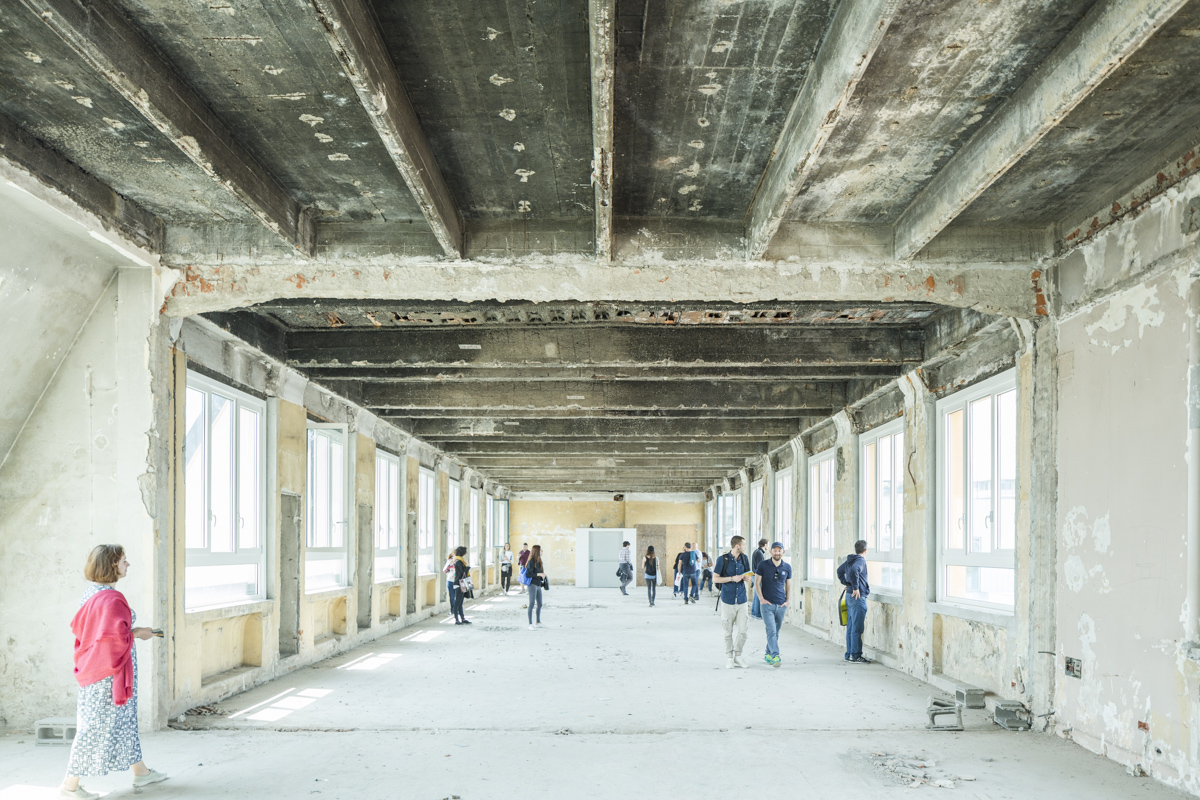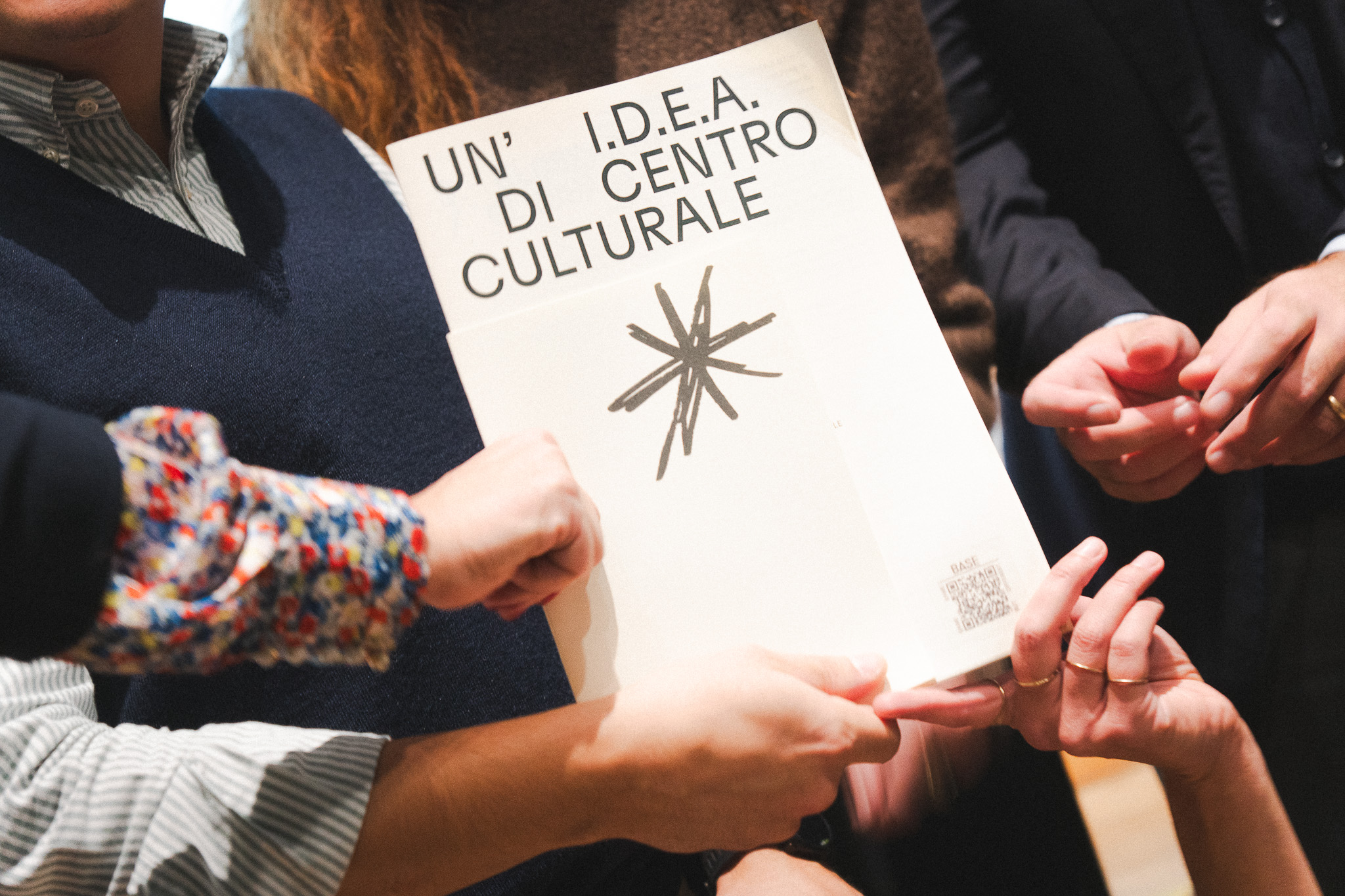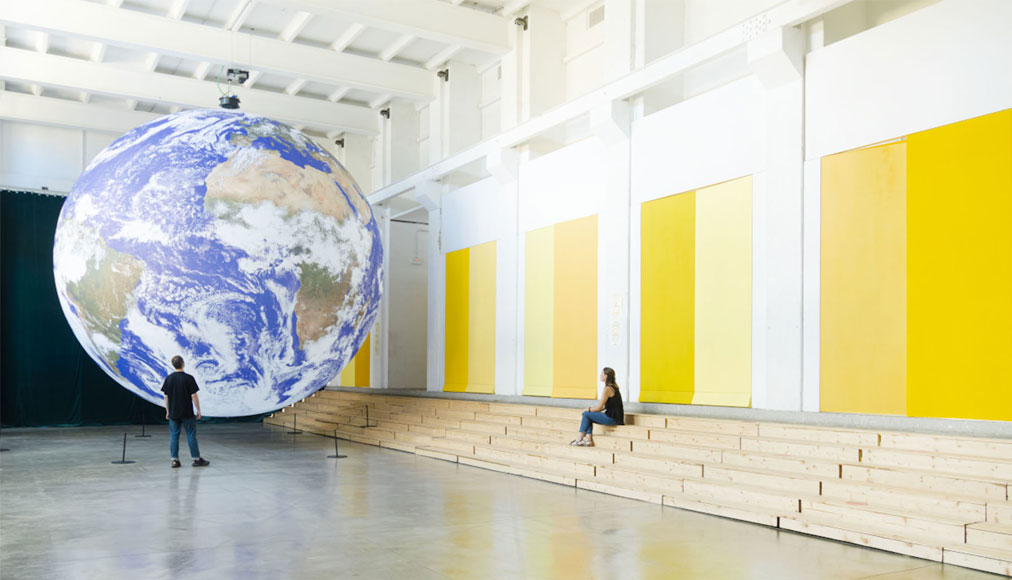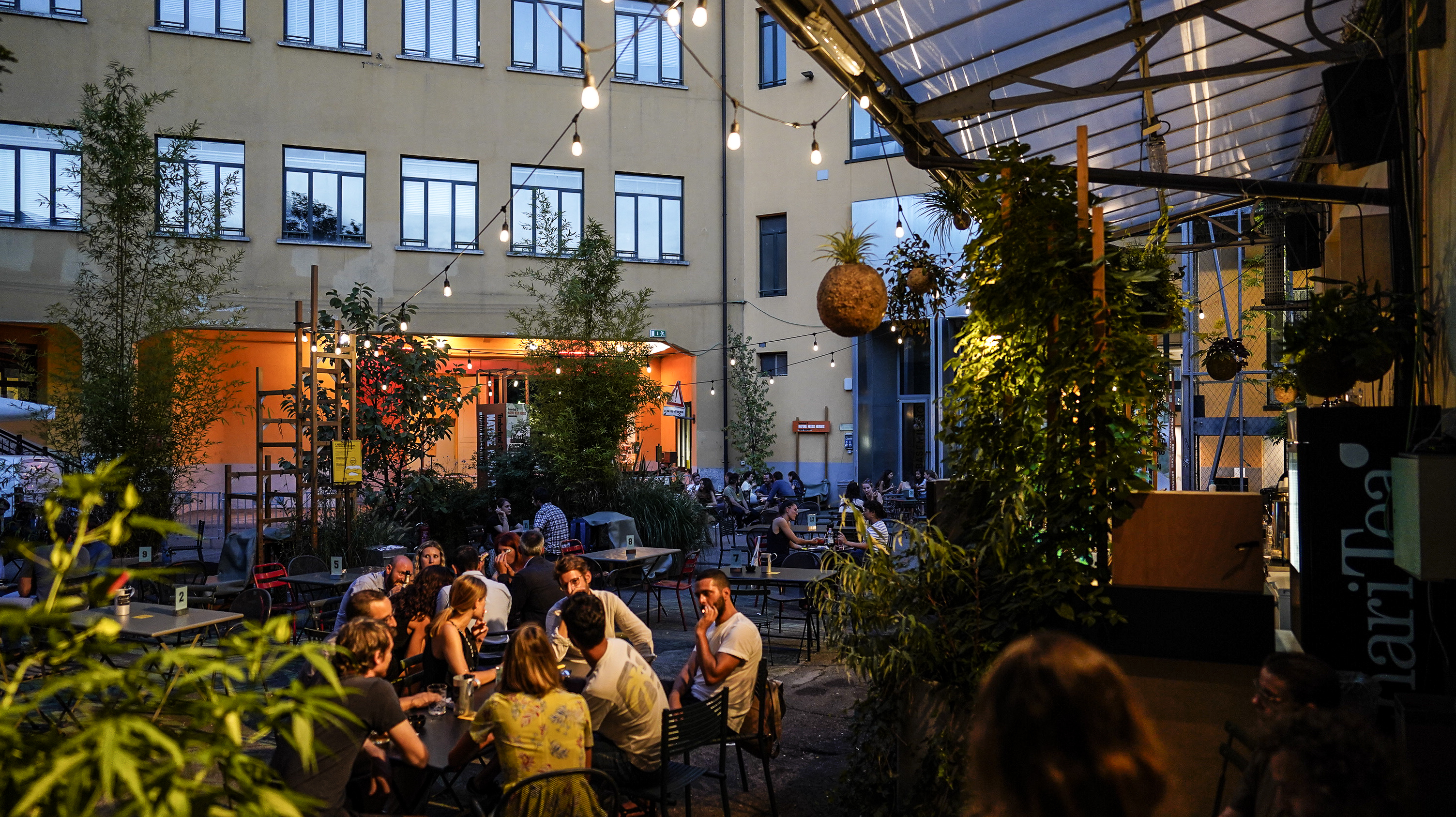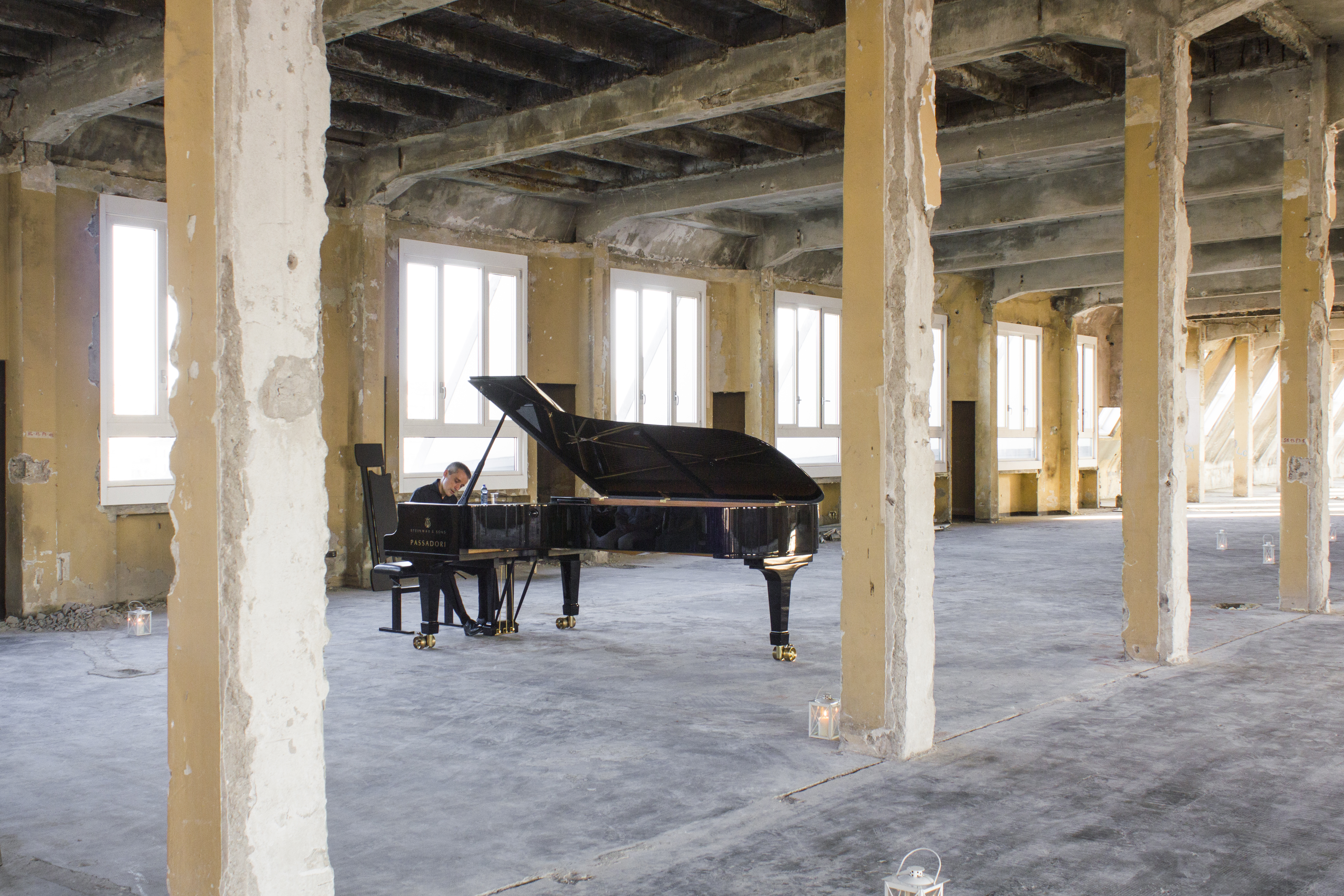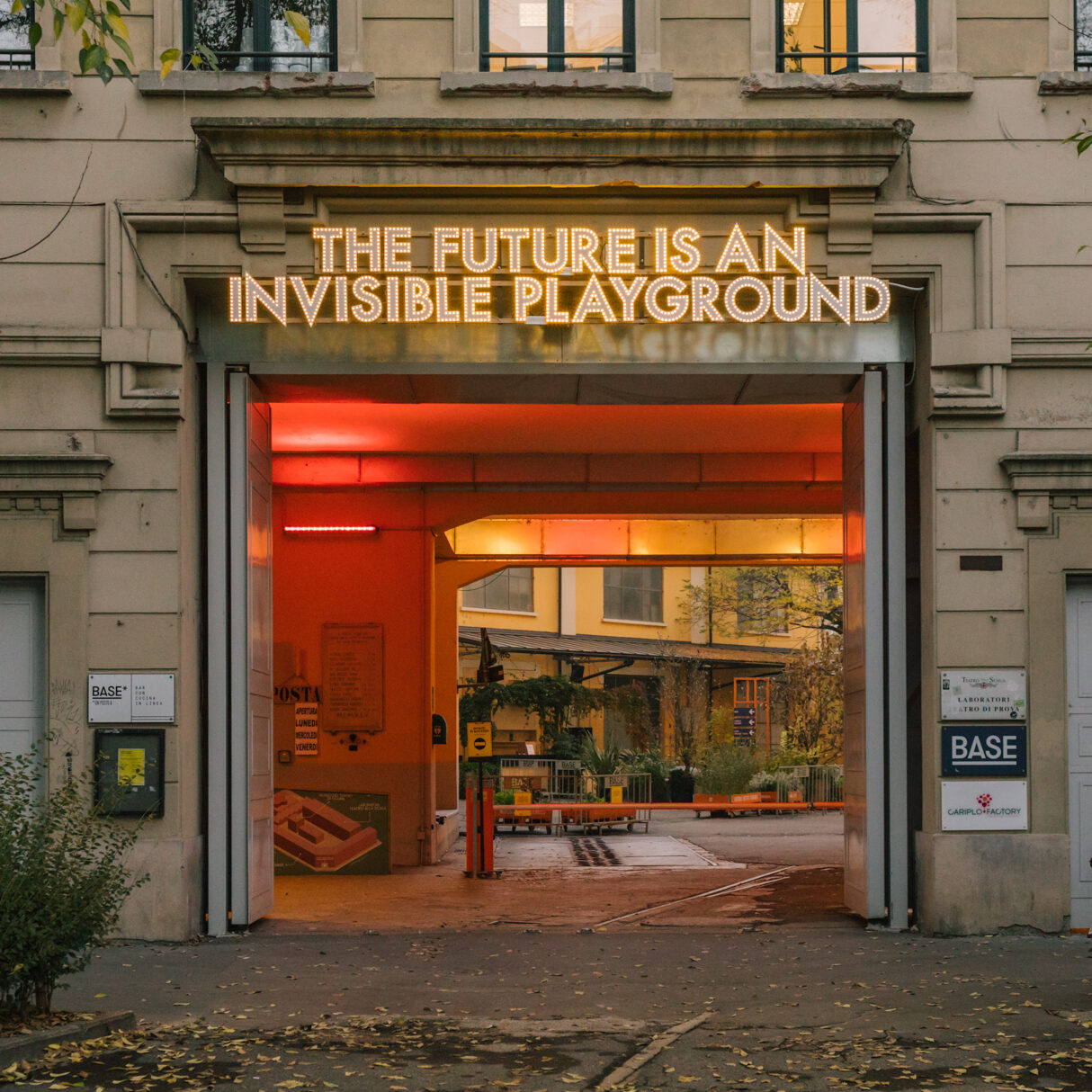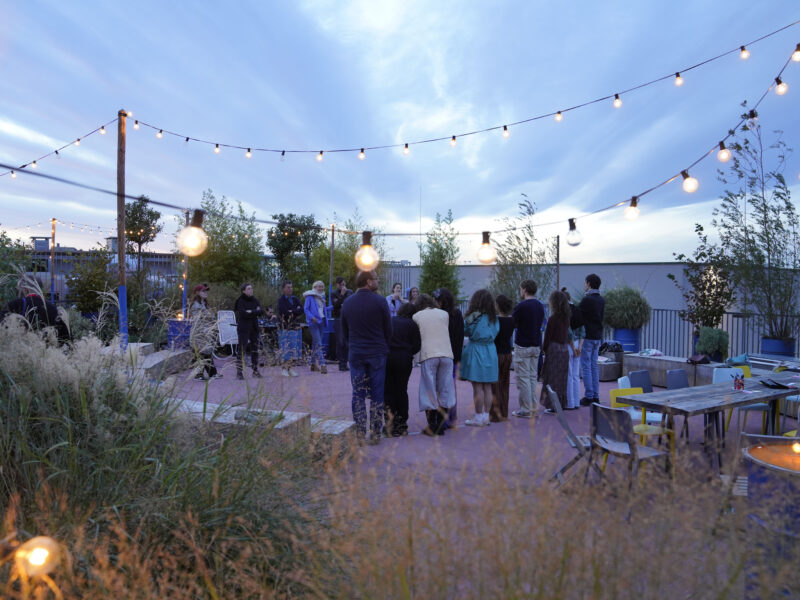Regaining a sense of belonging
An I.D.E.A. of Cultural Centre- BASE
An I.D.E.A. of Cultural Centre- BASE Milano
I.D.E.A. is a BASE Milano project. Through the expressive code of arts and culture, it aims at fostering a sense of belonging and ownership for marginalized groups and local community, improving their cultural representation.
I.D.E.A. is the set of practices of co-design, listening, inclusion, widening, oriented to stabilize the role of BASE as an institution that serves as amplifier for voices and energies who often sit at “the periphery” of public life.
I.D.E.A. is the set of practices of co-design, listening, inclusion, widening, oriented to stabilize the role of BASE as an institution that serves as amplifier for voices and energies who often sit at “the periphery” of public life.
Italy
Local
Urban area of Milano, Giambellino Neighborhood
Mainly urban
It refers to other types of transformations (soft investment)
Yes
2025-01-01
No
No
No
As a representative of an organisation, in partnership with other organisations
I.D.E.A. is a BASE Milano project. Through the expressive code of arts and culture, it aims at fostering a sense of belonging and ownership for marginalized groups and local community, improving their cultural representation.
I.D.E.A. is the set of practices of co-design, listening, inclusion, widening, oriented to stabilize the role of BASE as an institution that serves as amplifier for voices and energies who often sit at “the periphery” of public life – thus creating space for expression and narration, around which to build communities capable of social transformations.
This project translates the need for a cultural center to be a safe, accessible, free space. I.D.E.A. is the project-process through which BASE Milano since 2022 has been reshaping its role of place of recognition and pluralism. This project had a significant legacy: it turned out to be an endemic approach, a method, informing each decisional process BASE goes through.
BASE embraces the core values of this project in two different senses. First, in a more structural sense, as an ex disused place turned into a space serving communities. BASE Milano is a cultural hub located in Milan, Italy. It is a project of cultural contamination between arts, enterprise, technology and social innovation, which became one of the most important urban regeneration projects in Europe, by returning the city 12.000 square meters of the historic spaces of the former Ansaldo factory.
On a second level BASE embraces these core values in a strictly cultural sense, since its goal is to widen the area of what falls under the definition of “culture,” starting with those who have access to cultural professions, and thus actively shape the sector. This involves recognizing its positioning as well as its limits as organization, reformulating objectives and indicators, reimagining the structure, staff, vision, content, collaborations, and public program to meet its values as an open and multifaceted cultural institution
I.D.E.A. is the set of practices of co-design, listening, inclusion, widening, oriented to stabilize the role of BASE as an institution that serves as amplifier for voices and energies who often sit at “the periphery” of public life – thus creating space for expression and narration, around which to build communities capable of social transformations.
This project translates the need for a cultural center to be a safe, accessible, free space. I.D.E.A. is the project-process through which BASE Milano since 2022 has been reshaping its role of place of recognition and pluralism. This project had a significant legacy: it turned out to be an endemic approach, a method, informing each decisional process BASE goes through.
BASE embraces the core values of this project in two different senses. First, in a more structural sense, as an ex disused place turned into a space serving communities. BASE Milano is a cultural hub located in Milan, Italy. It is a project of cultural contamination between arts, enterprise, technology and social innovation, which became one of the most important urban regeneration projects in Europe, by returning the city 12.000 square meters of the historic spaces of the former Ansaldo factory.
On a second level BASE embraces these core values in a strictly cultural sense, since its goal is to widen the area of what falls under the definition of “culture,” starting with those who have access to cultural professions, and thus actively shape the sector. This involves recognizing its positioning as well as its limits as organization, reformulating objectives and indicators, reimagining the structure, staff, vision, content, collaborations, and public program to meet its values as an open and multifaceted cultural institution
Urban regeneration
Co-design
Cultural Accessibility
Safer Space
Kinship
I.D.E.A. is imbued with a deep ambition for sustainability. Here, the sense of sustainability is multifaced. The project includes a commitment towards environmental, cultural and social responsibility.
Environmental sustainability. Since its opening in 2016 BASE has reflected upon its role in a world where resources are limited and the effects of human activities irreversible. Being sustainable for us means: give value to what already exists spreading ecological and less impacting practices; activate virtuous collaborations with local ecosystems; use as much as possible clean energy and products for the functioning of the structure (installation of photovoltaic system and use of plastic free products can be an example); be a sheltered place in a urban environment where to suspend the consumer dynamics. What has been done in this field is:
An urban regeneration project, in opposition to the always more widespread overbuilding trend affecting Milano as many other European cities;
The creation of new spaces for community decentralizing services, reducing the need for internal travel and the rate of pollution generated by it. BASE provides the neighborhood with spaces like YES ROOM and GROUNDHALL where people can explore creative languages and community-based practices away from production logic;
The institution of a safer space. This action addresses a specific urban need: Milan increasingly lacks free social spaces, particularly dedicated to underrepresented communities.
Cultural and social sustainability. Being a cultural center today means having a great responsibility towards the future. I.D.E.A. has its roots in being receptive to the external world and in the need for a process of co-imagination of surviving possibilities. Being culturally and socially sustainable implies being aware of others as resources of growth and naturally leads to the idea of accessibility.Cultural accessibility indicates a commitment to ensuring the right of access, participation.
Environmental sustainability. Since its opening in 2016 BASE has reflected upon its role in a world where resources are limited and the effects of human activities irreversible. Being sustainable for us means: give value to what already exists spreading ecological and less impacting practices; activate virtuous collaborations with local ecosystems; use as much as possible clean energy and products for the functioning of the structure (installation of photovoltaic system and use of plastic free products can be an example); be a sheltered place in a urban environment where to suspend the consumer dynamics. What has been done in this field is:
An urban regeneration project, in opposition to the always more widespread overbuilding trend affecting Milano as many other European cities;
The creation of new spaces for community decentralizing services, reducing the need for internal travel and the rate of pollution generated by it. BASE provides the neighborhood with spaces like YES ROOM and GROUNDHALL where people can explore creative languages and community-based practices away from production logic;
The institution of a safer space. This action addresses a specific urban need: Milan increasingly lacks free social spaces, particularly dedicated to underrepresented communities.
Cultural and social sustainability. Being a cultural center today means having a great responsibility towards the future. I.D.E.A. has its roots in being receptive to the external world and in the need for a process of co-imagination of surviving possibilities. Being culturally and socially sustainable implies being aware of others as resources of growth and naturally leads to the idea of accessibility.Cultural accessibility indicates a commitment to ensuring the right of access, participation.
This project has implications in terms of aesthetics since it contributes to the setting up of a cross methodology, a procedural landmark to produce truly accessible culture and give life to nurturing moments of cooperation. Since I.D.E.A. began, BASE has started to conceive its cultural program as an interactive platform, more than something to be passively enjoyed. This was a turning point. I.D.E.A.’s objective is to “design with” rather than “organize for”, in the pursuit of a broad, diverse and inclusive cultural program. This entails directly co-curating contents with members of underrepresented communities and recognizing their contributions. This allows for a decentralization of the symbolic power of those who produce culture, redirecting the focus toward voices that have limited access to public arenas.
What BASE is everyday committed with is:
_Turning co-curation and collective curation practices into a standard part of programming, regarding them as moments of listening and continuous learning exercise. These last years have seen BASE collaborating with several realities for the drafting process of artistic call, to address specific audiences and to deliver truly accessible communication. BASE has also dedicated an entire section of its program to co-design with new generations, to include their perspectives into the cultural production and to provide them with a space where to take the responsibility to shape their future.
_Supporting emerging underrepresented entities throughout artistic-cultural production, by sharing knowledge, resources and know-how. BASE hosted many young artists giving them the chance to develop their artistic research path and activating a nurturing exchange of feedback.
_Launching open calls and selection processes addressed to individuals operating in cultural sectors that are active in marginalized contexts.
_Sharing access access agreement documents, providing information on individual accessibility requirements.
What BASE is everyday committed with is:
_Turning co-curation and collective curation practices into a standard part of programming, regarding them as moments of listening and continuous learning exercise. These last years have seen BASE collaborating with several realities for the drafting process of artistic call, to address specific audiences and to deliver truly accessible communication. BASE has also dedicated an entire section of its program to co-design with new generations, to include their perspectives into the cultural production and to provide them with a space where to take the responsibility to shape their future.
_Supporting emerging underrepresented entities throughout artistic-cultural production, by sharing knowledge, resources and know-how. BASE hosted many young artists giving them the chance to develop their artistic research path and activating a nurturing exchange of feedback.
_Launching open calls and selection processes addressed to individuals operating in cultural sectors that are active in marginalized contexts.
_Sharing access access agreement documents, providing information on individual accessibility requirements.
This project is a thoughtful attempt to make a cultural space a safer space, hindering exclusive dynamics and supporting the democratization of cultural contents. I.D.E.A. originated from the question: Do people feel expected? Is our place really for everyone? Thanks to these questions we can sense the shortcomings, get in touch with the bodies crossing our space, transform ourselves. Our goal is to become an open and plural cultural institution that enables and promotes access, coexistence and collaboration: a safe place, a platform and a sounding board for the voices we do not hear, for the bodies we do not see, for all those stories that do not exist until they are told.
Our specific objectives are:
_Offer a Plural cultural program, making space for those artists whose voice is often at the periphery of the cultural scene. This entails co-curating contents with members of underrepresented communities
_Be an accessible cultural space, embodying the notion of safety from several points of view. Besides the structural dimension, the accessibility of spaces should also assert the right to beauty, understood both as an aesthetic factor, as well as an element of well-being associated with a space, and which is too often placed in opposition to the concept of functionality.
_Activate fair recruitment and work processes. Promote equal access to work and ensure professional conditions able to accommodate diverse needs, introducing diversity in the staff and in cultural spaces, to better represent the territories they inhabit.
_Talk to one more person. Communicate to establish or to further strengthen a relationship. It is necessary to define communicative methods that are accessible and shaped to make the audience feel included, valued, and represented.
_Engaging new audiences.This entails the adoption of a caring approach, a sustained, collective commitment where each constituent of ‘the audience’ and ‘the organization’ identifies with a shared vision.
Our specific objectives are:
_Offer a Plural cultural program, making space for those artists whose voice is often at the periphery of the cultural scene. This entails co-curating contents with members of underrepresented communities
_Be an accessible cultural space, embodying the notion of safety from several points of view. Besides the structural dimension, the accessibility of spaces should also assert the right to beauty, understood both as an aesthetic factor, as well as an element of well-being associated with a space, and which is too often placed in opposition to the concept of functionality.
_Activate fair recruitment and work processes. Promote equal access to work and ensure professional conditions able to accommodate diverse needs, introducing diversity in the staff and in cultural spaces, to better represent the territories they inhabit.
_Talk to one more person. Communicate to establish or to further strengthen a relationship. It is necessary to define communicative methods that are accessible and shaped to make the audience feel included, valued, and represented.
_Engaging new audiences.This entails the adoption of a caring approach, a sustained, collective commitment where each constituent of ‘the audience’ and ‘the organization’ identifies with a shared vision.
The project involved people form three different levels and with different roles:
_First, it involved BASE’s internal staff, as learning subject and at the same time as an intermediary between traditional cultural institutions and people
_Several local underrepresented communities, as co-designers and protagonists. To be more specific, BASE directly involved in its processes: communities and groups subjected to forms of racialization, gender discrimination, ableism, young people and new generations whose perspective is often underestimated
_BASE’s effective and potential audience, as voices to be heard in the attempt to make a cultural center a place of representation and recognition
_Local communities. BASE gives great importance to its local posture, considering the neighborhood a primary interlocutor.
The start of I.D.E.A. was represented by an internal (directed towards BASE staff) process of capacity building whose program was based on a choral and intersectional approach, and focused on the themes collected in the acronym I.D.E.A (Inclusion, Diversity, Equity, Access), involving individuals and organizations from communities that are currently little involved in the life of BASE, to expand the center's capacity to accommodate and at the same time experiment with new models of participation, inclusion, and openness to new audiences of cultural institutions.This represented the first step for the creation of a network of communities and people involved in this project. In parallel, BASE promoted the birth of a multistakeholder table tasked with drafting an Open Protocol for Cultural Accessibility, presented in November 2023 and collecting principles, instances and best practices to activate concrete transformation in the cultural and creative sector. Groups taking part to these two prodromal actions were Milano Mediterranea and Moleskine Foundation on the themes of racialization and cultural colonialism; Espressy and Diversity Foundation; Fedora; Al.di.Qua.
_First, it involved BASE’s internal staff, as learning subject and at the same time as an intermediary between traditional cultural institutions and people
_Several local underrepresented communities, as co-designers and protagonists. To be more specific, BASE directly involved in its processes: communities and groups subjected to forms of racialization, gender discrimination, ableism, young people and new generations whose perspective is often underestimated
_BASE’s effective and potential audience, as voices to be heard in the attempt to make a cultural center a place of representation and recognition
_Local communities. BASE gives great importance to its local posture, considering the neighborhood a primary interlocutor.
The start of I.D.E.A. was represented by an internal (directed towards BASE staff) process of capacity building whose program was based on a choral and intersectional approach, and focused on the themes collected in the acronym I.D.E.A (Inclusion, Diversity, Equity, Access), involving individuals and organizations from communities that are currently little involved in the life of BASE, to expand the center's capacity to accommodate and at the same time experiment with new models of participation, inclusion, and openness to new audiences of cultural institutions.This represented the first step for the creation of a network of communities and people involved in this project. In parallel, BASE promoted the birth of a multistakeholder table tasked with drafting an Open Protocol for Cultural Accessibility, presented in November 2023 and collecting principles, instances and best practices to activate concrete transformation in the cultural and creative sector. Groups taking part to these two prodromal actions were Milano Mediterranea and Moleskine Foundation on the themes of racialization and cultural colonialism; Espressy and Diversity Foundation; Fedora; Al.di.Qua.
I.D.E.A. is a project involving local communities. BASE itself is a project oriented to collectivity; a cultural center made to be porous. Concerning the more specific actions of the project, the first stakeholders are underrepresented communities, with specific reference to those marginalized by dynamics of racialization, ableism and gender discrimination. I.D.E.A. is a process of listening and co-design of whom these communities were protagonists. Internal BASE’s staff and BASE’s audiences can also be mentioned as stakeholders. On a comprehensive perspective, BASE’s main stakeholders are:
COMMUNITIES: people taking part to BASE’s cultural offer, underrepresented groups, new generations and communities facing barriers to participation;
INSTITUTIONS, PUBLIC ADMINISTRATION, NETWORKS. From a more local to international dimension, we can mention Municipio 6, Comune di Milano, Rete Spazi Ibridi Milano, Lo Stato dei Luoghi Network, International Institutes of Culture in Italy and abroad, IN SITU, TEH. Among them, Europe Beyond Access: international network that questions issues of accessibility and inclusion in the performing arts to generate awareness and best practice experiences
CULTURAL ASSOCIATIONS AND CULTURAL CENTRES as interlocutors and allies. For example, Moleskine Foundation: nonprofit organization that aims to inspire a new generation of young activists to change their own futures through creativity and quality education; Milano Mediterranea: decolonial and nomadic participatory art center inhabiting Milan's suburbs; Al.Di.Qua. Artists (Alternative Disability Quality Artists): Italian trade association of performing arts workers with disabled bodies; Espressy: multidisciplinary think tank dedicated to diversity and inclusion; Diversity: foundation committed to spreading the culture of inclusion; Associazione Fedora: promoting cultural accessibility for people with disabilities with the aim of providing equal opportunities for access to culture.
COMMUNITIES: people taking part to BASE’s cultural offer, underrepresented groups, new generations and communities facing barriers to participation;
INSTITUTIONS, PUBLIC ADMINISTRATION, NETWORKS. From a more local to international dimension, we can mention Municipio 6, Comune di Milano, Rete Spazi Ibridi Milano, Lo Stato dei Luoghi Network, International Institutes of Culture in Italy and abroad, IN SITU, TEH. Among them, Europe Beyond Access: international network that questions issues of accessibility and inclusion in the performing arts to generate awareness and best practice experiences
CULTURAL ASSOCIATIONS AND CULTURAL CENTRES as interlocutors and allies. For example, Moleskine Foundation: nonprofit organization that aims to inspire a new generation of young activists to change their own futures through creativity and quality education; Milano Mediterranea: decolonial and nomadic participatory art center inhabiting Milan's suburbs; Al.Di.Qua. Artists (Alternative Disability Quality Artists): Italian trade association of performing arts workers with disabled bodies; Espressy: multidisciplinary think tank dedicated to diversity and inclusion; Diversity: foundation committed to spreading the culture of inclusion; Associazione Fedora: promoting cultural accessibility for people with disabilities with the aim of providing equal opportunities for access to culture.
The project puts together different kinds of expertise. First, it reflects and benefits from an intervention of urban and local regeneration since BASE is the result of the conversion of an industrial structure, designed together with a team of architect to be a place linked to the urban dimension but at the same time representing an alternative. The project is also structured by an expertise in cultural production, meant as a device of action towards contemporary crisis. Creative languages can be a strong and fertile driver of awareness and then, of social transformation. They can simply resonate an idea, a perspective on things, or involve people into revealing practices.
Moreover, I.D.E.A. reinforced BASE’s knowledge in terms of local community engagement and co-design practices. Six cultural and local realities have been involved in the first steps of the project, infusing their knowledge about how to reach out to different voices of a community respecting them and truly recognizing them.
BASE as an hybrid cultural institution also brings with itself great expertise in the field of cultural management, declined in terms of strategical thought, human resources management, relations with institutional and social subjects
Moreover, I.D.E.A. reinforced BASE’s knowledge in terms of local community engagement and co-design practices. Six cultural and local realities have been involved in the first steps of the project, infusing their knowledge about how to reach out to different voices of a community respecting them and truly recognizing them.
BASE as an hybrid cultural institution also brings with itself great expertise in the field of cultural management, declined in terms of strategical thought, human resources management, relations with institutional and social subjects
The innovative character of this project lies in its ambition to be responsive to the current crisis the urban context of Milano is facing. Milano is a hyper connected urban dimension, proud of its welcoming nature. Nevertheless, what lies beneath this reputation is a serious set, both specific and general, of issues. First, across Europe, urban areas face a great divide between central neighborhoods and peripheries, this contributing to inequalities; second, Milano is facing an housing crisis becoming endemic in the whole population; third the progressive individual isolation and the decline of collective forms of sharing, participation, expression; fourth, the risk even the simpler democratic dynamics and forms of free expression are facing and growing challenges in terms of inclusion and accessibility, particularly for disabled individuals and generally marginalised groups. All these critical aspects explain the need for a sustainable idea of pluralism, where everyone can count on his/her rights and where collective dimension is a source of recognition rather than of isolation. This is way I.D.E.A. is born from a cultural center which starts from asking itself “how can we be a truly safe space for people?”. Being a cultural space entails performing a public function, and it comes with the responsibility to build safe, accessible, and welcoming physical environments for all individuals. Here, the “unexpected” person becomes the design standard and reference, in the construction of spaces that do not practically and emotionally represent an obstacle but rather intimate a sense of belonging to a material and immaterial notion of common good. The accessibility of spaces should also assert the right to beauty, understood both as an aesthetic factor, as well as an element of well-being associated with a space, and which is too often placed in opposition to the concept of functionality. In meeting this demand, the creative sector can play a leading role.
This project embeds a multilevel, intersectional perspective. Co-design practices are the keystone of I.D.E.A. methodology. This allows for a decentralization of the symbolic power of those who produce culture, redirecting the focus toward voices that have limited access to public arenas. Co-design translates a democratic, collective posture towards truth, the idea that there’s a vital need for recognition and legitimation through others. Both I.D.E.A. and the whole BASE project, as a cultural center born from urban regeneration, ground on a thick conception of collectivity. Co-design also stands for epistemic peerhood since who’s better off (meaning who’s born in a more privileged position) is not entitled to determine how things should be, in a paternalistic attitude.
To summarize which actions which gave shape to the process:
:Internal and external capacity building. To question ourselves, to know and recognize our own barriers and those that leave other people out. To look where we had not yet looked and look for solutions. A path shared by the staff of BASE and others active in the cultural world on the issues of racialization, gender discrimination, ableism. We found some answers, we are left with a thousand questions
_Advocacy for the accessibility of cultural centers. To develop a thinking and working tool for cultural institutions that, like us, want to rethink themselves as plural and open. The result? The protocol: content, container, an open and free working document to be consulted, used or revised by multiple hands, voices, perspectives
_Public program. To make space for perspectives, voices, narratives, formats, and models and to “design with” instead of “organize for.” We work together with individuals, communities, companies, associations, activists and professionals from the world of art, design, music and culture in all its disciplines
_Round tables and debate sessions
_Drafting of An I.D.E.A. of Cultural Centre, in progress manifesto
To summarize which actions which gave shape to the process:
:Internal and external capacity building. To question ourselves, to know and recognize our own barriers and those that leave other people out. To look where we had not yet looked and look for solutions. A path shared by the staff of BASE and others active in the cultural world on the issues of racialization, gender discrimination, ableism. We found some answers, we are left with a thousand questions
_Advocacy for the accessibility of cultural centers. To develop a thinking and working tool for cultural institutions that, like us, want to rethink themselves as plural and open. The result? The protocol: content, container, an open and free working document to be consulted, used or revised by multiple hands, voices, perspectives
_Public program. To make space for perspectives, voices, narratives, formats, and models and to “design with” instead of “organize for.” We work together with individuals, communities, companies, associations, activists and professionals from the world of art, design, music and culture in all its disciplines
_Round tables and debate sessions
_Drafting of An I.D.E.A. of Cultural Centre, in progress manifesto
I.D.E.A. is a project and at the same time a process, a strategy, an approach. And, as said, it’s deeply soaked with advocacy ambition. Due to its cross nature and insisting on a more structural level, I.D.E.A.’s methodology is a replicable and scalable approach. The project clearly derives from some geographical and cultural peculiarities, but it also echoes some relevant transnational needs, some needs belonging to a communitarian dimension. Starting from what does sustainability mean for a cultural center. Many communities, both urban and non-urban, could benefit from the acquisition, or testing, of a co- design, accessible, plural approach.
Some of the capabilities BASE could transfer to other contexts are:
_Co-design processes coordination. This implies being receptive of local and social needs and gathering subjects to shed light on how culture can have an active role on things needing to be improved.
_Multi-level governance, involving local administration, cultural subjects, communities and corporate subjects.
_Participatory Approach to Social transformation. It asserts that social change cannot be fully realized through top-down mandates or external impositions but must be driven by the people who are most directly impacted by systemic inequalities, cultural norms, and political decisions. This approach underscores the idea that those who experience exclusion, discrimination, or marginalization hold the knowledge and experiences essential to designing meaningful, sustainable solutions. By recognizing the importance of collective input, a participatory model prioritizes democratic participation, inclusion, and empowerment at every stage of social and political development.
The replicability of the project concerns also one of its editorial and physical output. “An I.D.E.A. of cultural centre” is a Manifesto, a collection of thoughts, reflections and guidelines capable of activating a process of reshaping, or at least of questioning.
Some of the capabilities BASE could transfer to other contexts are:
_Co-design processes coordination. This implies being receptive of local and social needs and gathering subjects to shed light on how culture can have an active role on things needing to be improved.
_Multi-level governance, involving local administration, cultural subjects, communities and corporate subjects.
_Participatory Approach to Social transformation. It asserts that social change cannot be fully realized through top-down mandates or external impositions but must be driven by the people who are most directly impacted by systemic inequalities, cultural norms, and political decisions. This approach underscores the idea that those who experience exclusion, discrimination, or marginalization hold the knowledge and experiences essential to designing meaningful, sustainable solutions. By recognizing the importance of collective input, a participatory model prioritizes democratic participation, inclusion, and empowerment at every stage of social and political development.
The replicability of the project concerns also one of its editorial and physical output. “An I.D.E.A. of cultural centre” is a Manifesto, a collection of thoughts, reflections and guidelines capable of activating a process of reshaping, or at least of questioning.
I.D.E.A. is a local attempt to answer wider and worldly-spread needs. Reshaping and rethinking the functioning of a cultural center situated in the urban dimension of Milano and characterized by some specific features, the project addresses general themes and goes against rooted and traditional conceptions of cultural production.
To recall the global goals aimed at producing better life conditions by 2030, I.D.E.A. tackles the challenge of social, cultural and gender equality proposing a methodology rooted in co-design practices and aimed at being truly representative of pluralism.
In this sense it also ties itself to the goal of reducing inequalities through a politics of recognition, rather than through cold neutralism, letting each identity manifest herself and her needs (notwithstanding harm principle). I.D.E.A. also operates at a more “istitutionalized”, starting from a reflection upon the sustainability of cities and communities' dynamics. BASE has a privileged position, being an atypical cultural institution. This implies its faculty of spreading a counter narrative, maybe unpopular for the most, into a stricter context of burocracy and tradition.
To recall the global goals aimed at producing better life conditions by 2030, I.D.E.A. tackles the challenge of social, cultural and gender equality proposing a methodology rooted in co-design practices and aimed at being truly representative of pluralism.
In this sense it also ties itself to the goal of reducing inequalities through a politics of recognition, rather than through cold neutralism, letting each identity manifest herself and her needs (notwithstanding harm principle). I.D.E.A. also operates at a more “istitutionalized”, starting from a reflection upon the sustainability of cities and communities' dynamics. BASE has a privileged position, being an atypical cultural institution. This implies its faculty of spreading a counter narrative, maybe unpopular for the most, into a stricter context of burocracy and tradition.
BASE offers 12,000 square meters of the former Ansaldo factory for permanent and temporary functions, attracting around 400,000 visitors annually. Collaborating with key cultural partners, BASE runs a year-round Public Program with talks, workshops, performances, and concerts. I.D.E.A. has deeply impacted BASE influencing both its physical structure and content. Structurally, BASE has committed to accessibility across three key areas:
_Physical Barriers: Creating accessible reception areas, flexible designs for spaces and tools, spaces that can be autonomously used by individuals with disabilities.
_Sensory Barriers: BASE has introduced tactile and virtual maps, audio description services, subtitling, captioning, and translations for both on-site and digital content, along with decompression areas to accommodate neurodivergent individuals and those with sensory disabilities.
_Cognitive Barriers: Clear signage and an organized schedule for events ensure that everyone can easily understand and navigate space.
I.D.E.A. also influenced BASE’s cultural programming, particularly its residency program. This program is marked by co-curatorial processes and collaboration with various actors. An example is Birds of Passage, a curatorial project in partnership with art historian Mistura Allison, which received nearly 400 submissions on the theme of cultural decolonization from a transfeminist pan-African perspective.
In collaboration with Al.Di.Qua.Artists, BASE has researched and developed residency models accessible to individuals with disabilities. A post-residency questionnaire was designed to assess the needs of artists regarding workspace accommodation, support staff, hospitality spaces.
BASE has hosted numerous artists working on intersectional issues related to D&I, such as Sagal Farah, SA Smythe, and Simon Dogger. Additionally, a dedicated feedback channel(samesame@base.milano.it) allows people to share insights and suggestions to further enhance accessibility.
_Physical Barriers: Creating accessible reception areas, flexible designs for spaces and tools, spaces that can be autonomously used by individuals with disabilities.
_Sensory Barriers: BASE has introduced tactile and virtual maps, audio description services, subtitling, captioning, and translations for both on-site and digital content, along with decompression areas to accommodate neurodivergent individuals and those with sensory disabilities.
_Cognitive Barriers: Clear signage and an organized schedule for events ensure that everyone can easily understand and navigate space.
I.D.E.A. also influenced BASE’s cultural programming, particularly its residency program. This program is marked by co-curatorial processes and collaboration with various actors. An example is Birds of Passage, a curatorial project in partnership with art historian Mistura Allison, which received nearly 400 submissions on the theme of cultural decolonization from a transfeminist pan-African perspective.
In collaboration with Al.Di.Qua.Artists, BASE has researched and developed residency models accessible to individuals with disabilities. A post-residency questionnaire was designed to assess the needs of artists regarding workspace accommodation, support staff, hospitality spaces.
BASE has hosted numerous artists working on intersectional issues related to D&I, such as Sagal Farah, SA Smythe, and Simon Dogger. Additionally, a dedicated feedback channel(samesame@base.milano.it) allows people to share insights and suggestions to further enhance accessibility.

